Objects in flux: Boston's Museum of Fine Arts explores the changing face of craft
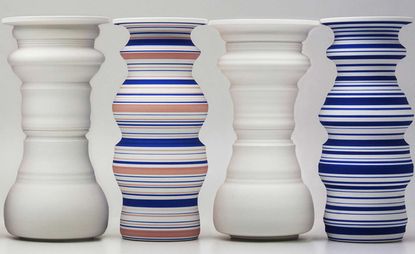
Probably one of the most overused yet ambiguous words within the design industry, the definition of the word 'craft' has undergone a dramatic shift since the end of the Second World War. Where in the past it was simply defined as the skilful making of objects by hand, the continually blurring boundaries between the disciplines of art, craft and design have challenged this notion.
Crafted: Objects in Flux, a new exhibition at the Museum of Fine Arts in Boston sets out to explore this subject by placing craft into a larger historical context. The show 'introduces a diverse group of international artists who strive to subvert our expectations of craft within the complex field of contemporary art,' explains Malcolm Rogers, the Museum's outgoing Ann and Graham Gund Director. 'These artists use a wide range of 21st century materials, technologies and modes of display to expand notions of what a crafted object is and can be.'
Comprising over 50 pieces by 41 emerging and established artists, each of the exhibits have been made since 2003 and each incorporate materials, forms or ideas traditionally associated with the field of craft. Made using a diverse range of processes and materials – fibre, glass, ceramics, wood, metal and jewellery among others – the works are organised into three themes: 'The Re-Tooled Object', 'The Performance Object' and 'The Immersive Object'.
'Re-Tooled' objects include Anton Alvarez’s chair, which was created using his own 'Thread Wrapping Machine', and Faig Ahmed’s distorted Azerbaijani carpets, which fuse traditional carpet making techniques and patterns with his own digitally-distorted interventions.
Site-specific works in the exhibition that represent 'The Immersive Object' include Nathan Craven's 2015 'Poros' installation, where thousands of hollow ceramic elements that reference flora, sunbursts, amoebas and comic books cover the gallery's large square window, illuminated by natural light.
Other pieces show how craft is inherently 'performative' and celebrate the theatrical aspect of making. In this section, US-based Japanese artist Etsuko Ichikawa uses a blowpipe as a de facto paintbrush, trailing molten glass over dampened paper to create calligraphic lines that she calls 'Firewritings'.
As a permanent record of the exhibition's works and the themes it explores, author and Museum curator Emily Zilber has put together a publication to accompany the show. 'I hope that this exhibition will encourage visitors to expand their perception of what craft can look like and say,' she explains. 'I am thrilled to be able to present the works of so many talented artists who have made exciting new artworks through an embrace of shifting boundaries integrated with skilful making.'
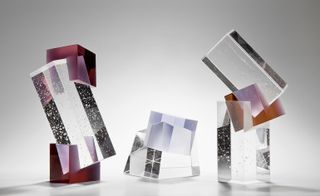
Comprising over 50 pieces by 41 emerging and established artists, each of the exhibits have been made since 2003 and each incorporate materials, forms or ideas traditionally associated with the field of craft. Pictured: Heike Brachlow's Theme and Variations I, 2009; Syntax V, 2014; and Axiom XII, 2014.
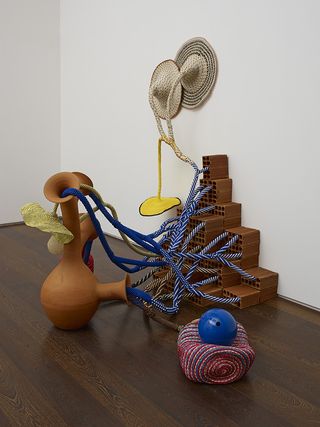
'These artists use a wide range of 21st century materials, technologies and modes of display to expand notions of what a crafted object is and can be,' explains Malcolm Rogers, the Museum's outgoing Ann and Graham Gund Director. Pictured: Untitled by Maria Nepomuceno, 2013. Photography courtesy of Stephen D and Susan W Paine Acquisition Fund for 20th Century and Contemporary Art

The works are organised into three themes: 'The Re-Tooled Object', 'The Performance Object' and 'The Immersive Object'. Pictured: Newdrift by Ian Stell, 2013.
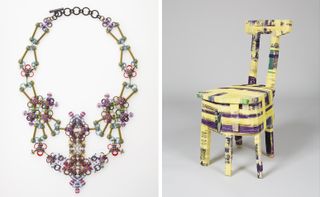
'Re-Tooled' objects include Anton Alvarez’s chair, which was created using his own 'Thread Wrapping Machine' (right) and Svenja John's jewellery (left). Made from Makrofol, a processed polycarbonate foil found more typically in bicycle helmets and solar panels, John's jewellery explores centuries-old themes of ornamentation and symmetry in a contemporary material. Pictured left: Wittenberg by Svenja John, 2014. Photography courtesy of the artist and Jewelers' Werk Galerie. Right: The Thread Wrapping Machine Chair 090415 by Anton Alvarez, 2015.
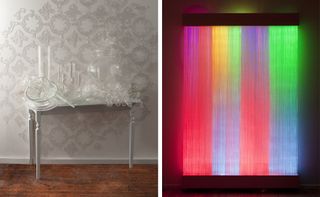
Beth Lipman’s environmental sculptures made with meticulously handled pieces of colorless glass, are on display as part of the exhibition's 'Immersive Object' selection, while Astrid Krogh's optical fibre tapestries are showcased as part of 'Re-Tooled Objects'. Pictured left: Cut Table by Beth Lipman, 2014. Photography courtesy of the Claire Oliver Gallery, NYC. Right: Ikat II by Astrid Krogh, 2011.

As a permanent record of the exhibition's works and the themes it explores, author and curator Emily Zilber has put together a publication to accompany the show. Pictured: Drag Photograph by Susie Ganch, 2013.
ADDRESS
Museum of Fine Arts
Boston Avenue of the Arts
465 Huntington Avenue Boston
Massachusetts 02115
Wallpaper* Newsletter
Receive our daily digest of inspiration, escapism and design stories from around the world direct to your inbox
-
 Pininfarina Battista Reversario is a new one-off electric hypercar
Pininfarina Battista Reversario is a new one-off electric hypercarThe all-electric Pininfarina Battista Reversario is joining its aesthetic inverse in an ultra-select car collector’s garage. We take a look at a car built to a very precise order
By Jonathan Bell Published
-
 Fernando Jorge’s fluid diamond earrings show his curve appeal
Fernando Jorge’s fluid diamond earrings show his curve appealDiscover Brazilian jewellery designer Fernando Jorge's snake-like silhouettes and graphic shapes
By Hannah Silver Published
-
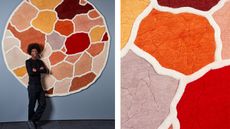 Abreham Brioschi debuts Ethiopia-inspired rugs for Nodus
Abreham Brioschi debuts Ethiopia-inspired rugs for NodusAbreham Brioschi teams up with luxury rug experts Nodus to translate visions from his heritage into a tactile reality
By Ifeoluwa Adedeji Published
-
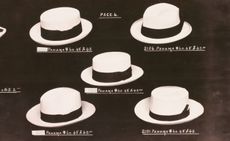 The Met’s ‘The Real Thing: Unpacking Product Photography’ dissects the avant-garde in early advertising
The Met’s ‘The Real Thing: Unpacking Product Photography’ dissects the avant-garde in early advertisingA new exhibition at The Metropolitan Museum of Art in New York explores the role of product photography and advertising in shaping the visual language of modernism
By Zoe Whitfield Published
-
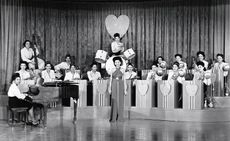 Detroit Institute of Arts celebrates Black cinema
Detroit Institute of Arts celebrates Black cinema‘Regeneration: Black Cinema 1898-1971’ at the Detroit Institute of Arts (DIA) brings lost or forgotten films, filmmakers and performers to a contemporary audience
By Anne Soward Published
-
 BLUM marks 30 years of Japanese contemporary art in America
BLUM marks 30 years of Japanese contemporary art in AmericaBLUM will take ‘Thirty Years: Written with a Splash of Blood’ to its New York space in September 2024, continuing its celebration of Japanese contemporary art in America
By Timothy Anscombe-Bell Published
-
 Todd Gray’s sculptural photography collages defy dimension, linearity and narrative
Todd Gray’s sculptural photography collages defy dimension, linearity and narrativeIn Todd Gray’s New York exhibition, he revisits his 40-year archive, fragmented into elaborated frames that open doors for new readings
By Osman Can Yerebakan Published
-
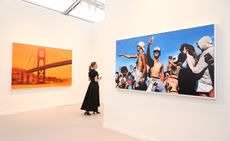 Frieze LA 2024 guide: the art, gossip and buzz
Frieze LA 2024 guide: the art, gossip and buzzOur Frieze LA 2024 guide includes everything you need to know and see in and around the fair
By Renée Reizman Published
-
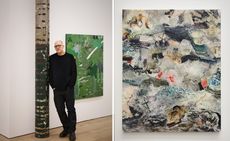 New York artist Christopher Astley showcases an alternative natural world
New York artist Christopher Astley showcases an alternative natural worldAt Martos Gallery in New York, Christopher Astley’s paintings evoke an alternative natural world and the chaos of warfare (until 16 March 2024)
By Tianna Williams Published
-
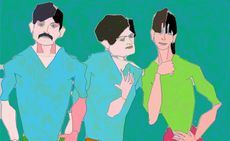 The Whitney plots Harold Cohen’s artistic AI adventures
The Whitney plots Harold Cohen’s artistic AI adventures‘Harold Cohen: AARON’, at the Whitney Museum of American Art celebrates the artist’s software – the earliest AI program for artmaking – as an artwork in its own right
By Hannah Silver Published
-
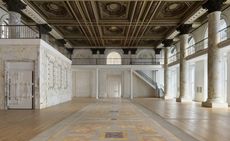 Sneak peek: inside Jack Shainman’s vast New York gallery
Sneak peek: inside Jack Shainman’s vast New York galleryJack Shainman’s new gallery space opens with ‘Broken Spectre’, a new film by Irish artist Richard Mosse
By Mary Cleary Published